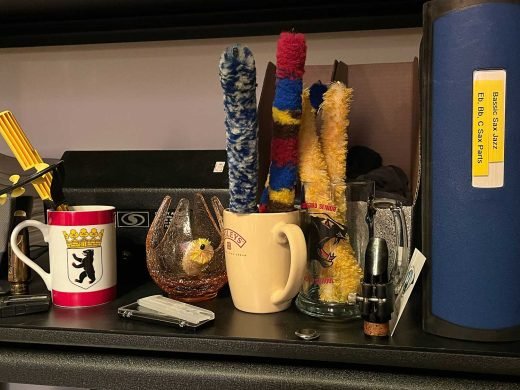
Years ago when I was working on my university entrance auditions, my teacher invited me to do one of our lessons in an empty church. She had me stand at the front of the church, and play Handel Sonata No.3—one of my audition pieces we were working on at the time—as if it were a mock performance.
Until this point I’d only played in the confines of my bedroom, or in the small practice modules at the local university. (Generally, all acoustically dead spaces.) Nowhere I had played before had been capable of creating the vast resonance, rich low notes and brilliant high tones, which were created by the large church space.
My teacher told me to fully absorb every detail and nuance of the sound I was hearing, and mentally create from that an inner concept of sound. I was then to imagine this as the normal sound coming out of my instrument during everyday practice. I thought this was a little weird at first, but she hadn’t steered me wrong so far, so who was I to argue?
The next time I practiced, I spent a few moments imagining myself standing in the church, and recalling the sound. I didn’t really expect it could possibly make that great of a difference. However, when I started to play, I was instantly struck by how much richer and more resonant my sound suddenly seemed to have become. Notes that had previously died as soon as they came out of the bell, now seemed to hang in the air and were filled with far greater depth and emotional content than before.
Expanding The Concept
I quickly found other ways to expand on this new knowledge. I had always loved the sound of the violin, so I decided to make the emotional characteristics of the violin, part of my classical saxophone sound.
I spent hours absorbing the fibrous sound of the bow drawing across the strings. When I played, I imagined my breath was that bow, making the string (reed) vibrate and sing. Again my efforts were quickly rewarded, when someone walking past my practice module told me they were surprised to see a saxophone player, where they were expecting to find someone holding a violin.
Merging the Tenor And Alto
I continued to apply this strategy to developing my jazz sound. I love playing the alto, but haven’t always cared for the high-pitched squeals it could create, and in many ways prefer the deeper sound of the tenor.
I decided to dedicate the bulk of my music listening to tenor players like John Coltrane, Sonny Rollins, and especially Dexter Gordon, whose giant sound, airy vibrato, and cool sub-toning I was in love with. This allowed the sound of the tenor to mentally merge with the more focused sound of the alto. After a while I noticed these characteristics begin to emerge quite organically in my sound, without me paying any particular attention to the physical techniques that might be required to achieve them.
Building On The Mechanics Of Sound
While there are of course the obvious and necessary mechanics of proper breath support, embouchure, vocalization/throat positions, as well as equipment to developing a strong tone, I quickly recognized that acquiring a concept of sound in your ear—and in your mind—is an essential part of building on the mechanics of sound. This allows you take your tone to the next level, and/or create a signature sound.
Note from Helen
This is the first article written by my friend, Ilona Weiss. Ilona is a fellow saxophonist and saxophone instructor. She teaches at King’s Music in Abbotsford. She is a graduate of Jazz Studies from Humber College, in Toronto, ON.
I am pleased to welcome her to the Bassic Sax Blog staff. I am letting her write about whatever she chooses. She and I share similar backgrounds, love the same kinds of horns, and have played on and off together in bands for the past 5 or so years. I am looking forward to see what she is going to write about.
Going forward, if you want to reach her, you can do so through the Contact Page. You can of course always leave a comment on her articles as well. 😉





For some reason your new email layout is cutting off margins. The text is all there, but it is right up against the
edges, which is harder to read.
Hi Guy.
I am not sure what you mean about my “new email layout…cutting off margins”.
Are you receiving notifications about new articles via email, and are those where the margins are too close to the edges?
If you could forward me what email you have, I would appreciate it. You can send it directly to me at: bassic.sax.info@gmail.com
I will try to figure out what’s going on from there.
Thank you!